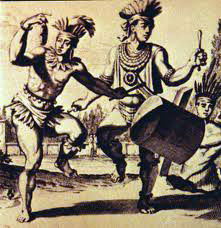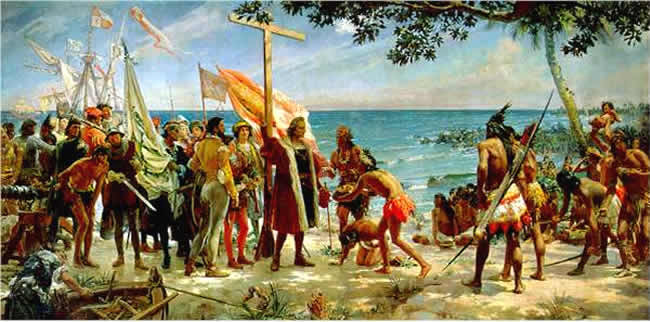Charlestown High World History
Monday, November 29, 2021
Sunday, November 7, 2021
Thursday, September 23, 2021
Station 1: Vodou Ceremony VIdeo
Station 1
Be sure to read the prayer and look at the picture at this station
Wednesday, December 11, 2019
Congo in the Cold War
Background on the
Democratic Republic of Congo during the Cold War
Democratic Republic of Congo during the Cold War
IIn 1960, the Congo became independent from Belgium after 75 years of colonial rule. Patrice Lumumba became its first democratically elected Prime Minister. Lumumba ran on a nationalist platform. He believed the mines and companies of the Congo should belong to the Congolese people. He also didn’t trust authorities from Belgium, or any nation allied with Belgium (such as the United States.)
In the first few weeks of Lumumba’s administration, Lumumba faced a crisis. The richest part of the Congo, the state of Katanga, tried to break away and form their own country. There were many foreign owned companies in Katanga that were worried about Lumumba nationalizing them.
A mini - civil war broke out, called the Katanga Crisis. Lumumba had to use military force to keep the state of Katanga in the Congo. However, the army of the Democratic Republic of Congo wasn’t strong enough to force Katanga to stay on its own. It had to get military assistance from somewhere else.
The choices Lumumba made in the Congo Crisis ultimately led to United States involvement in the Congo. Make you own predictions about what happened and check your predictions as you start your research.
Cold War Unit Project
Directions: To choose your country for this project, browse the options by clicking on the links to read an overview.
Click here to learn about Nicaragua in the Cold War.
If you choose this country, you will read this primary source.
Click here to learn about Guatemala in the Cold War.
If you choose this country, you will read this primary source.
Click here to learn about the Dominican Republic in the Cold War.
If you choose this country, you will read this primary source.
Click here to learn about Chile in the Cold War.
If you choose this country, you will read this primary source.
Click here to learn about the Congo in the Cold War.
If you choose this country, you will read this primary source.
Tuesday, October 22, 2019
Haitian Revolution Overview
If you need an overview/review of the Haitian Revolution, watch the video linked below.
Change the speed to .75 to slow it down because the guy talks really fast.
Click here to see the video.
Change the speed to .75 to slow it down because the guy talks really fast.
Click here to see the video.
Tuesday, October 1, 2019
Taino Artifacts
Artifact 1: Image of Taíno women preparing cassava bread.
Artifact 2: Images of Taíno canoes
Artifact 4: Image and description of an Areítos
 Areítos were held for a variety of reasons, including to honor and entertain guests. In the early days of European colonization, Taíno chiefs hosted areítos for Spanish visitors, who recorded information about the ceremonies. According to the historical documentation, areítos often featured assemblies of nobles dancing and singing to music played with rattles and drums. The ceremonies invoked elements of Taíno culture and religious practice, including veneration of ancestors. Areítos were held in designated spaces, specifically the public plaza or dance ground outside the chief's house. Classic Taíno villages often featured an elaborate dance court.
Areítos were held for a variety of reasons, including to honor and entertain guests. In the early days of European colonization, Taíno chiefs hosted areítos for Spanish visitors, who recorded information about the ceremonies. According to the historical documentation, areítos often featured assemblies of nobles dancing and singing to music played with rattles and drums. The ceremonies invoked elements of Taíno culture and religious practice, including veneration of ancestors. Areítos were held in designated spaces, specifically the public plaza or dance ground outside the chief's house. Classic Taíno villages often featured an elaborate dance court.
Artifact 5: Painting of the first encounter between Columbus and the Taíno
Artifact 2: Images of Taíno canoes
Artifact 3: Journal Entry from Columbus's diary
Monday, October 15. And while I was between these two islands, i.e., Santa María and this large one which I named Fernandina, I met a man alone in a canoe going from the island of Santa María to Fernandina. He had with him a small loaf, the size of his fist, a gourd of water, some red earth ground into powder and made into paste, and some dried leaves, which these people must greatly prize, for they presented me some of it on San Salvador. He had also a basket made in their native fashion in which he had a small string of glass beads and two [Spanish coins]. From these things I knew that he had come from the island of San Salvador, had touched Santa María, and was now going to Fernandina.
Artifact 4: Image and description of an Areítos
 Areítos were held for a variety of reasons, including to honor and entertain guests. In the early days of European colonization, Taíno chiefs hosted areítos for Spanish visitors, who recorded information about the ceremonies. According to the historical documentation, areítos often featured assemblies of nobles dancing and singing to music played with rattles and drums. The ceremonies invoked elements of Taíno culture and religious practice, including veneration of ancestors. Areítos were held in designated spaces, specifically the public plaza or dance ground outside the chief's house. Classic Taíno villages often featured an elaborate dance court.
Areítos were held for a variety of reasons, including to honor and entertain guests. In the early days of European colonization, Taíno chiefs hosted areítos for Spanish visitors, who recorded information about the ceremonies. According to the historical documentation, areítos often featured assemblies of nobles dancing and singing to music played with rattles and drums. The ceremonies invoked elements of Taíno culture and religious practice, including veneration of ancestors. Areítos were held in designated spaces, specifically the public plaza or dance ground outside the chief's house. Classic Taíno villages often featured an elaborate dance court.Artifact 5: Painting of the first encounter between Columbus and the Taíno
Subscribe to:
Posts (Atom)




